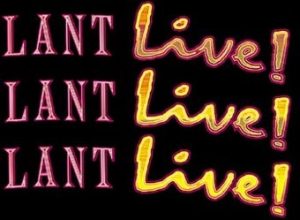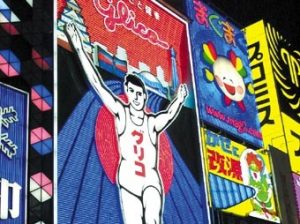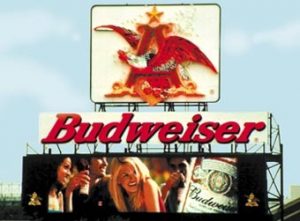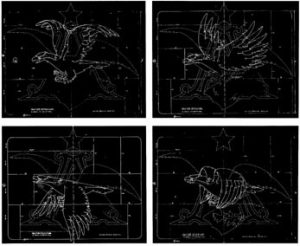Today, big theaters, event venues and spectacular signs often incorporate LED videoboards. LEDs are quite well-suited for videoboards (a technician at heart, I prefer the "EIDOPHOR" projection system for large-scale video), but an animated neon sign may be a better and less costly alternative. This month, I’ll focus on achieving attractive, motion effects via neon.
Videoscreens located in entertainment hotbeds like Atlantic City, NJ, don’t typically display their full capabilities. They repetitively show simple sequences for 2-5 seconds, without providing abundant information. Why?
Most spectators spend less than three seconds viewing a sign. Thus, if the information presented is either too complex or too vast, viewers will consider the sign’s message unimportant or uninteresting. Conversely, spectators are more likely to notice and recall signs bearing simple, repetitive messages. In consequence, videoboards capable of playing "live" information are usually relegated to simple, graphics-assisted messages.
Animating neon
Unlike a few applications in which real-time LED videoboards are needed to create the desired impression, other cost-effective means can create motion effects. Here, animated neon fills the gap from simple flashing to complex, cartoon, movie strips.
A standard neon sign can draw more attention than a steady "on" sign when it’s simply switched on-off periodically. Such an attention-grabbing effect simply requires an inexpensive, thermostatic blinker relay.
Creating movement can be achieved most simply by building a "speller" neon sign, where each letter or section lights up in sequence, while previously lit letters remain illuminated. At the end, the sign’s entire message is built and lit. A typical example are the "C-A-S-H–for-Gold" signs.
Creating a sign’s spelling doesn’t require special design, but it does involve a different electrical layout — you need a separate transformer for each message section, which should illuminate separately. High-voltage animator switches, used extensively in the 1930s for spelling, are questionable today due to their short lifespan and radio interference (see ST, February 2002, page 34).
However, spelling neon is no longer trendy. Instead, neon cascades are more frequently seen. Fig. 1 depicts a typical example. A series of parallel tubes is lit in fast sequence to create a waterfall effect. In the "Power PlantLive!" sign (also featured this month on page 70), tubes fill the script letters.
As previously stated, you need one transformer for each step of the sequence — one transformer for each row of tubing.
In this example, one row is divided several times, into sections for individual letters, to create the effect of filling the letters from top to bottom in parallel. The "waterfall effect" juxtaposes with the outline lettering, but it can be, and is widely, used without frames to create posterized surface motion.
Especially in the Japanese neon style, entire sign surfaces are covered with adjacent neon tubes that light in fast sequence (Fig. 2). In large scale, this effect requires many transformers, tubes and electrical work, similar to a video wall. To ensure safety with so many closely packed tubes, often, transformers with an output voltage of less than 1,000V are chosen (the tubes being accordingly short).
Today, multi-channel computer controls have replaced mechanical flashers and control units. In large-scale animations, the standard has become the DMX-512 protocol, in which ample wiring is saved by using electronic, neon, power supplies with built-in DMX digital interfaces, so only one power cable and one low-voltage data cable are daisy-chained from one power supply to the next. This system can control 512 independent channels, which should be sufficient for most signs (see ST, February 2002, page 34).
Neon enthusiasts marvel at animated figurative signs, such as the famous Budweiser eagle structure (Fig. 3).
To achieve this breathtaking, live effect in neon, a movie of an eagle flying loose in an armory was produced. Then, animation artist Bryan Rabbit of Walt Disney Studios selected the best pictures from the movie and rendered them in a neon outline (Fig. 4).
Each image — a complete neon sign — was created in different layers so that the electrode connections and mounting-post positions didn’t collide. Plus, critical visibility areas couldn’t be obstructed by overlaid tubing.
Overlaid animations often employ clear-glass filled neon, which allow back layers to shine through, while the top tube is inoperable. In contrast to the complexity of the cascade effect’s electrical controls, here, an animated figurative sign merely steps through the different positions.
In addition, more work is involved in creating a layout that generates a smooth-movement impression. Also, the sequence’s final speed should be carefully adjusted to generate the best effect.
Large spectaculars aren’t necessarily required for effective figurative animation. A simple, walking man, animal or wheel can create eye-catching effects. From my experience, I’ve learned that a figurative animation should feature at least four positions to create smooth movement.
Run for the border
If a cascade is too expensive, and figurative animation involves too much fancy artwork, a "border chaser" may be a cost-effective alternative. Originally designed for a row of incandescent lamps, the "border chaser" contains a three- or four- (rarely five) channel switch that switches one circuit off at a time, while all others remain on. Because the movement is so fast, the eye can barely follow it.
When lightbulbs or short neon sections are mounted in periodic circuit order (1-2-3-4-1-2-3-4-1-2-3-4, etc.), the human eye sees a very fast movement along the chain of lamps. The neon sections are usually identical and thus require only one single pattern.
Geometric shapes, like Greek fretwork, are widely used. One circuit’s tubes can be wired in series, so, in total, four transformers are required. When electric, neon power supplies are used to create a quick-flashing effect, make sure the tubes extinguish immediately — which only a few models do — to avoid a tailing effect. With carefully designed animated neon, the eye-catching effect may not only be less pricey, but in some cases, more original than uniform LED videoscreens.
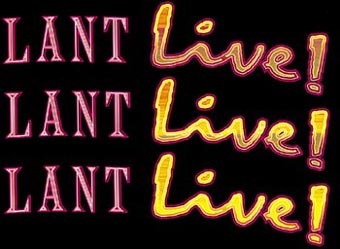


 Tip Sheet1 week ago
Tip Sheet1 week ago
 Ask Signs of the Times3 days ago
Ask Signs of the Times3 days ago
 Photo Gallery1 day ago
Photo Gallery1 day ago
 Real Deal1 week ago
Real Deal1 week ago
 Benchmarks6 days ago
Benchmarks6 days ago
 Editor's Note2 weeks ago
Editor's Note2 weeks ago
 Women in Signs1 week ago
Women in Signs1 week ago
 Photo Gallery1 week ago
Photo Gallery1 week ago